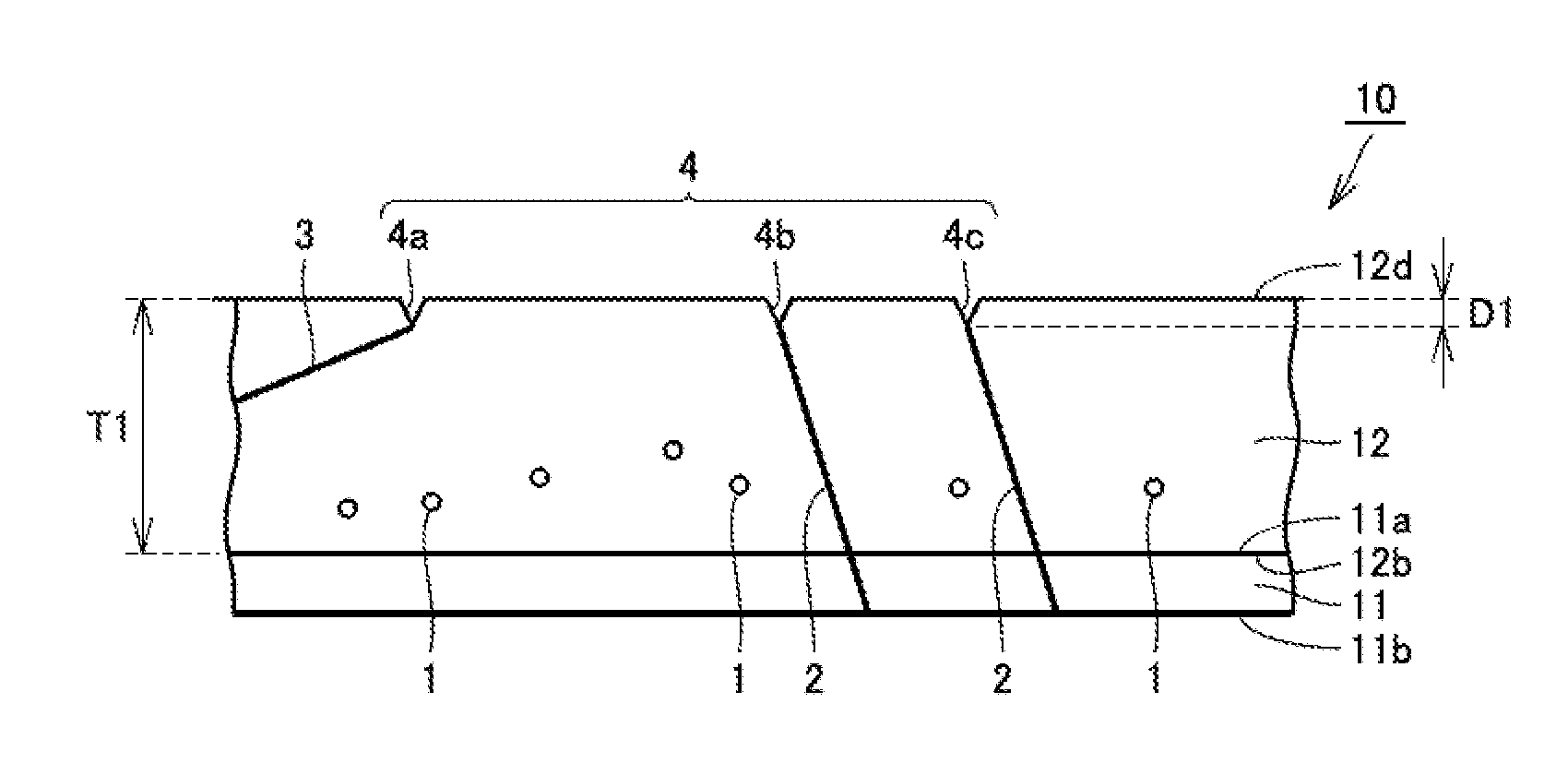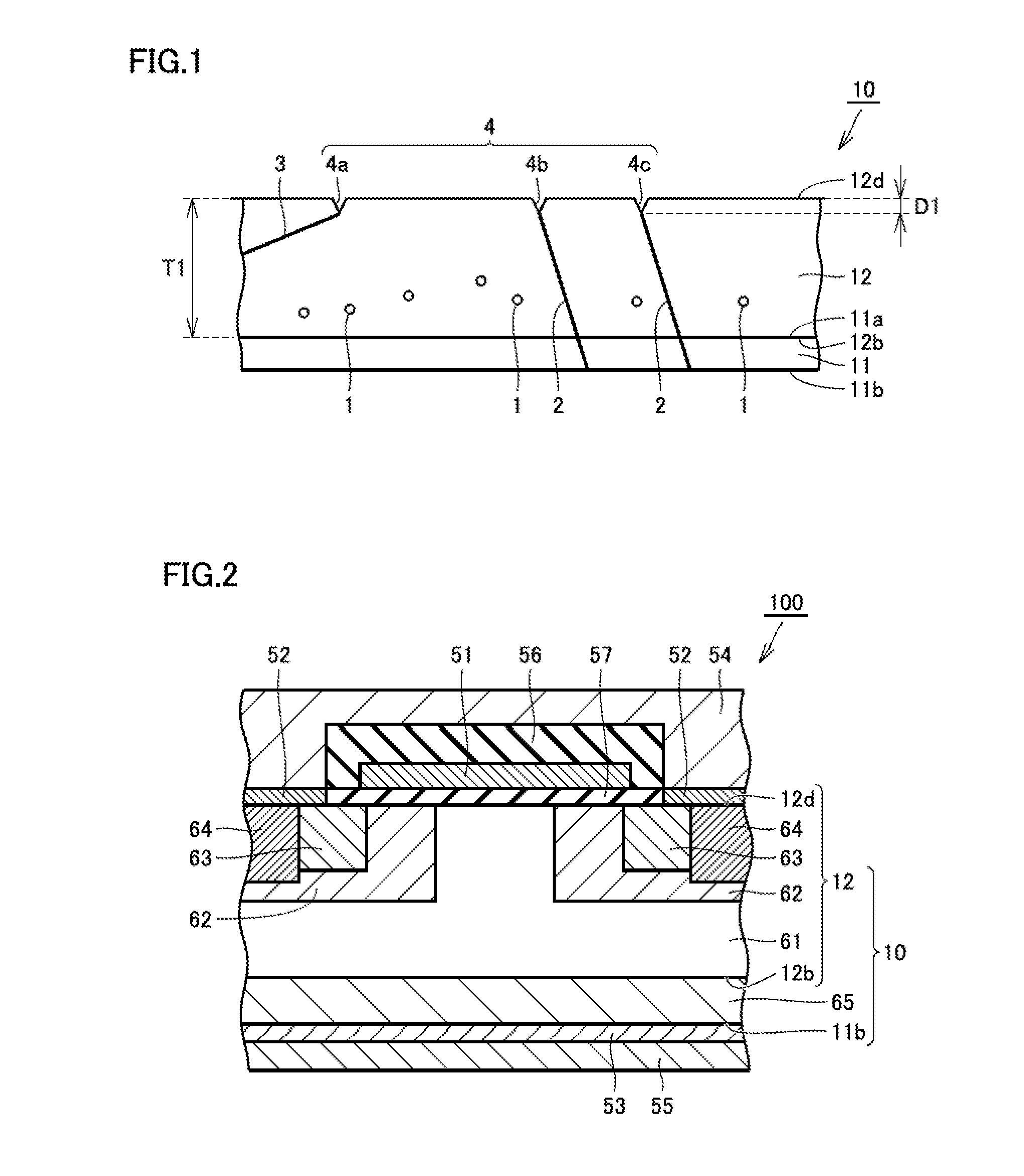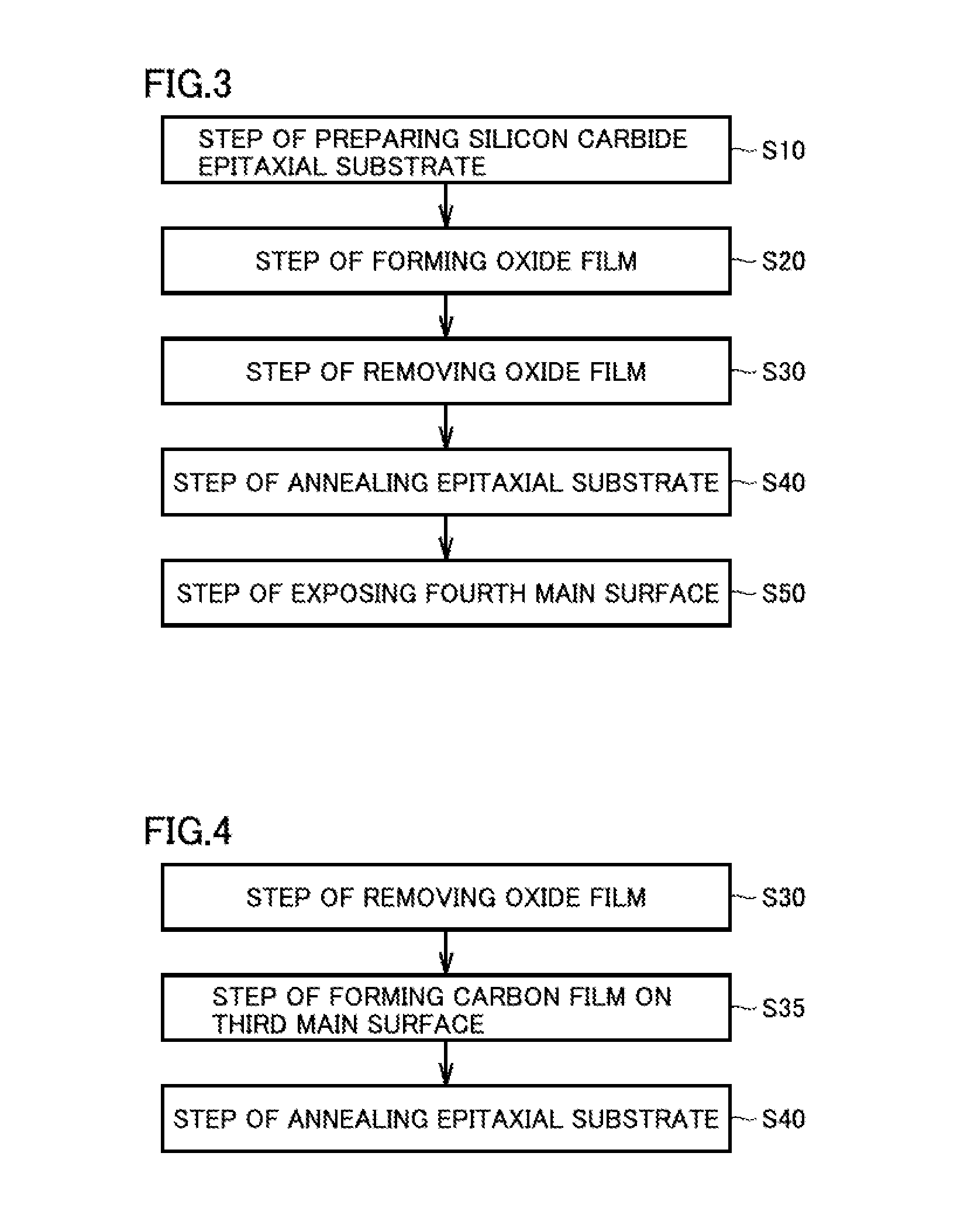Silicon carbide substrate, silicon carbide semiconductor device, and method for manufacturing silicon carbide substrate
a silicon carbide substrate and semiconductor technology, applied in the direction of semiconductor devices, electrical equipment, basic electric elements, etc., can solve the problems of high resistance and deterioration of dielectric breakdown resistance of gate insulating films provided on silicon carbide epitaxial layers, and achieve the effect of suppressing the dielectric breakdown of gate insulating films
- Summary
- Abstract
- Description
- Claims
- Application Information
AI Technical Summary
Benefits of technology
Problems solved by technology
Method used
Image
Examples
first embodiment
[0040]First, the following describes a configuration of a silicon carbide substrate 10 according to a first embodiment of the present invention.
[0041]As shown in FIG. 1, a silicon carbide substrate 10 according to the present embodiment mainly includes a silicon carbide single crystal substrate 11 and a silicon carbide epitaxial layer 12. Silicon carbide single crystal substrate 11 is made of hexagonal silicon carbide having polytype 4H, for example. Silicon carbide epitaxial layer 12 is provided on silicon carbide single crystal substrate 11. Silicon carbide epitaxial layer 12 has a first main surface 12b in contact with silicon carbide single crystal substrate 11 and a second main surface 12d opposite to first main surface 12b. Silicon carbide epitaxial layer 12 has a thickness T1 of not less than 50 μm in a direction perpendicular to second main surface 12d. Preferably, thickness T1 of silicon carbide epitaxial layer 12 is not less than 100 μm, more prefe...
second embodiment
Silicon Carbide Semiconductor Device
[0050]Next, the following describes a configuration of an IGBT (Insulated Gate Bipolar Transistor) as a silicon carbide semiconductor device 100 according to a second embodiment of the present invention.
[0051]As shown in FIG. 2, IGBT 100 according to the present embodiment is a bipolar semiconductor device mainly including silicon carbide epitaxial layer 12, a gate insulating film 57, a gate electrode 51, an interlayer insulating film 56, an emitter electrode 52, a collector electrode 53, an upper interconnection 54, and a lower interconnection 55. Silicon carbide substrate 10 mainly includes silicon carbide epitaxial layer 12 and a collector region 65.
[0052]Silicon carbide epitaxial layer 12 has first main surface 12b and second main surface 12d opposite to first main surface 12b. There are pits 4 in second main surface 12d of silicon carbide epitaxial layer 12, and each of pits 4 originates from threading dislocations 2 or basal plane dislocatio...
third embodiment
Method for Manufacturing Silicon Carbide Substrate
[0060]Next, the following describes a method for manufacturing silicon carbide substrate 10 according to a third embodiment of the present invention.
[0061]First, a step (S10: FIG. 3) of preparing a silicon carbide epitaxial substrate is performed. For example, silicon carbide single crystal substrate 11 is prepared by slicing a silicon carbide single crystal ingot. The polytype of the silicon carbide is 4H, for example. Silicon carbide single crystal substrate 11 has a front surface 11a and a backside surface 11b, for example. Front surface 11a of silicon carbide single crystal substrate 11 corresponds to a {0001} plane or a plane angled off relative to the {0001} plane, for example. Front surface 11a has an off angle of for example, not less than 1° and not more than 8°, preferably, not less than 2° and not more than 7°, and more preferably, not less than 3° and not more than 5°. The off direction is a direction, for example. Silic...
PUM
| Property | Measurement | Unit |
|---|---|---|
| thickness | aaaaa | aaaaa |
| depth | aaaaa | aaaaa |
| breakdown voltage | aaaaa | aaaaa |
Abstract
Description
Claims
Application Information
 Login to View More
Login to View More - R&D
- Intellectual Property
- Life Sciences
- Materials
- Tech Scout
- Unparalleled Data Quality
- Higher Quality Content
- 60% Fewer Hallucinations
Browse by: Latest US Patents, China's latest patents, Technical Efficacy Thesaurus, Application Domain, Technology Topic, Popular Technical Reports.
© 2025 PatSnap. All rights reserved.Legal|Privacy policy|Modern Slavery Act Transparency Statement|Sitemap|About US| Contact US: help@patsnap.com



